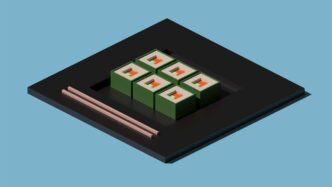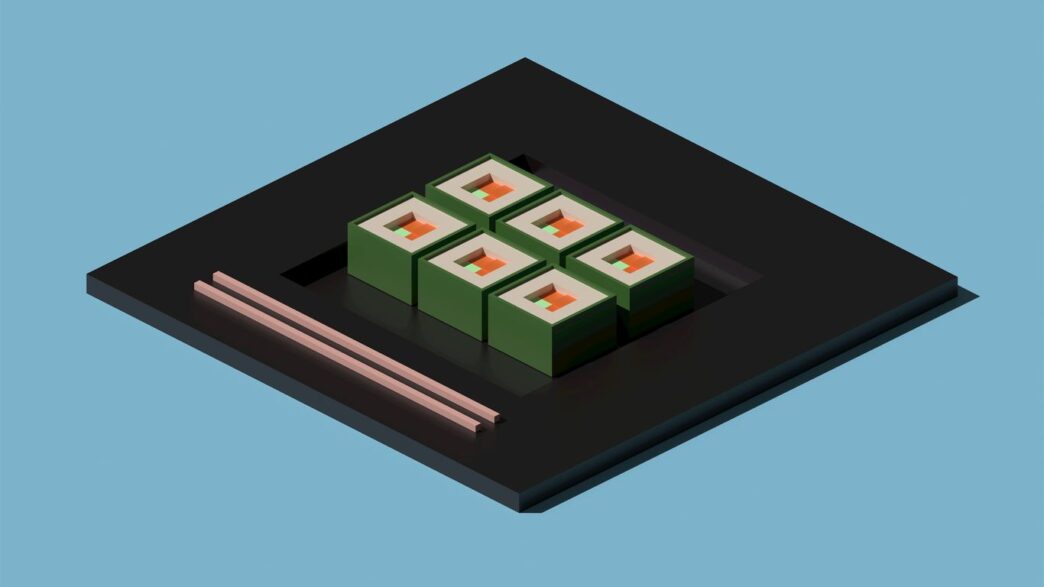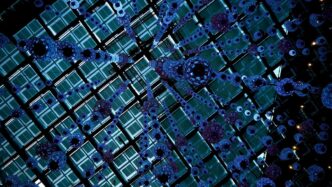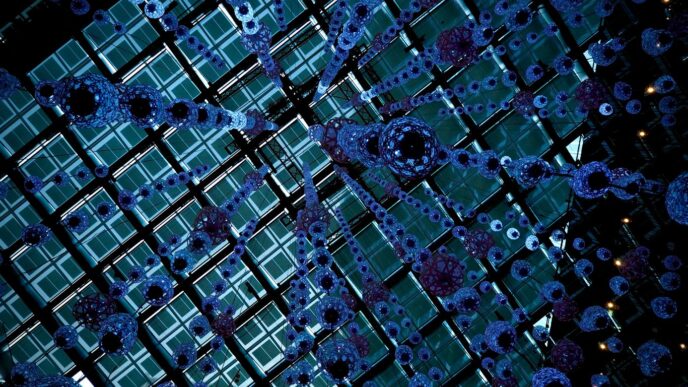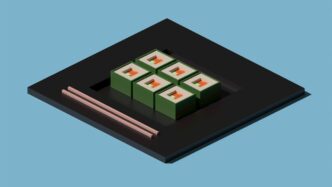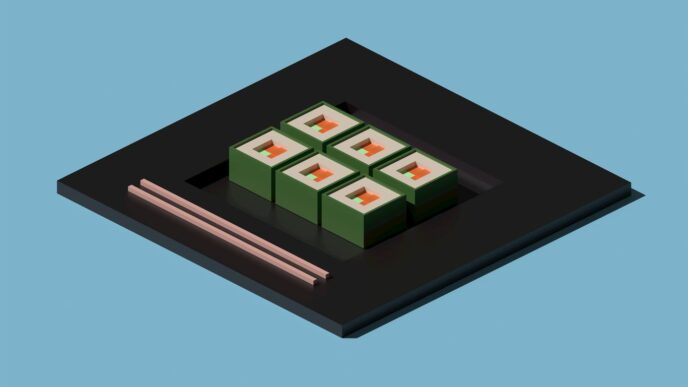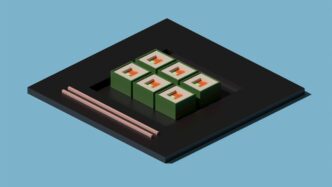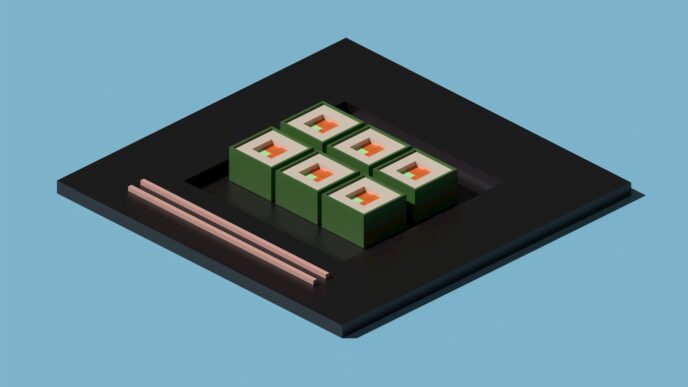So, Google’s quantum computer is making waves again. You might have heard some buzz about it solving problems that would take, like, 10,000 years for a regular computer. It sounds pretty wild, right? But what does that actually mean for us? We’re going to break down what Google has been up to, why that 10,000-year number keeps popping up, and if we’ll actually see this tech doing anything useful anytime soon. It’s not quite science fiction anymore, but it’s still pretty complex stuff.
Key Takeaways
- Google’s new quantum chip, Willow, and its ‘Quantum Echoes’ algorithm show a massive speedup, solving problems thousands of times faster than supercomputers.
- The company claims its quantum computer can tackle tasks that would take a classical computer billions of years, though this estimate has been debated.
- A major step is the ‘verifiable quantum advantage,’ meaning the results can be checked by another quantum computer, adding credibility to the claims.
- While not solving commercial problems yet, Google sees practical uses in areas like drug discovery and materials science within the next five years.
- Advancements in the Willow chip and dedicated fabrication facilities show Google is serious about scaling up and improving qubit reliability for future quantum machines.
Google Quantum Computer’s Leap in Processing Power
Quantum Echoes Algorithm Achieves Unprecedented Speed
So, Google’s quantum team has been busy. They’ve cooked up this new algorithm called "Quantum Echoes," and get this – it can tackle certain problems a staggering 13,000 times faster than even the most powerful supercomputers out there. This isn’t just a small jump; it’s a massive leap forward. Think about it: a task that would take a supercomputer ages could be done in a blink by this quantum setup. It’s like comparing a bicycle to a rocket ship for specific journeys. This speed boost is a big deal because it brings us closer to actually using quantum computers for real-world science stuff, like figuring out new medicines or creating advanced materials.
Willow Chip: A Milestone in Qubit Scalability
Part of this speedup comes from Google’s new "Willow" quantum chip. They’ve been working on making these chips bigger and better, packing in more qubits – the basic building blocks of quantum computers. The cool thing they found is that as they add more qubits, the errors that usually mess things up actually start to decrease. This is a huge step because, for a long time, more qubits often meant more errors, which was a major roadblock. It’s like finding a way to build a taller tower without it becoming wobbly.
Here’s a simplified look at what they’re seeing:
| Qubit Count | Error Rate Trend |
|---|---|
| Low | Higher |
| High | Lower |
Verifiable Quantum Advantage Demonstrated
What really sets this work apart is that it’s not just fast; it’s verifiable. This means scientists can actually check the answers the quantum computer spits out. They used a clever method, kind of like sending a "ping" into the system and seeing how it responds, to get a clear result. This is important because quantum computers can be a bit fuzzy with their answers – they give probabilities, not always a single, definite number like your laptop. Being able to verify the results means we can trust them more. They even ran tests that simulated 10 years of classical computing time to confirm their findings. It’s a big deal for proving that these machines are actually doing something beyond what regular computers can.
- The Quantum Echoes algorithm: Solves problems much faster than classical computers.
- The Willow chip: Shows that adding more qubits can actually reduce errors.
- Verifiable results: Allows scientists to check the quantum computer’s answers, building trust in the technology.
Addressing the 10,000 Year Calculation Challenge
New Estimates for Classical Computation Time
So, remember that whole thing about Google’s quantum computer solving a problem in, like, 10,000 years? Well, it turns out that number has been a bit of a moving target. When Google first announced their quantum supremacy back in 2019, they said it would take a regular computer about 10,000 years to do the same task. But then, folks over at IBM chimed in, saying, ‘Hold on a minute, with a few tweaks to how we think about classical computers, we could probably do it in about two and a half days.’ Ouch. Google took that feedback, and in their latest estimates, they’ve adjusted the numbers. Even if you give a classical computer the absolute best-case scenario, they’re now saying it would still take a staggering billion years to match what their newest chip can do. That’s a pretty big difference from two and a half days, right?
Google’s Response to Skeptical Challenges
It’s not just about the raw speed, though. There have been some questions about whether these quantum computers are actually doing anything useful or if they’re just fancy calculators. Some people even question if they’re doing any real quantum computing at all, calling the whole thing ‘gibberish.’ Google’s approach to dealing with this skepticism is pretty interesting. They’re not just saying ‘trust us.’ Instead, they’re focusing on making their results verifiable. Think of it like this: they’re sending a signal, a sort of ‘ping,’ into their quantum system and then carefully watching how it reacts. By doing this millions of times a second, they can get a really good look at what the system is doing without messing it up too much. This ‘Quantum Echoes’ method, as they call it, is designed to give a clear, single number as an answer, which is way easier to check than a bunch of random samples.
The Significance of Verifiable Quantum Supremacy
This whole idea of ‘verifiable quantum supremacy’ is a big deal in the quantum world. It’s not about solving a problem that’s immediately useful for, say, making a new drug, at least not yet. The main goal right now is to prove, beyond a doubt, that a quantum computer can do something a classical computer simply can’t, or would take an absurdly long time to do. And importantly, they want another quantum computer to be able to check their work. This is where the ‘Quantum Echoes’ verification method really shines. It’s like having a built-in fact-checker for quantum results. While some rivals are busy building chips with more qubits, Google seems to be putting a lot of effort into making sure their qubits are as reliable as possible. They’ve even built their own special factory just for making these chips, hoping to speed up how fast they can test new ideas. It’s all about getting those cycles of learning in as quickly as possible.
Practical Applications on the Horizon
So, what does all this quantum mumbo-jumbo actually mean for us? It’s easy to get lost in the technical details, but the real excitement is in what these machines could do. For a long time, quantum computing felt like something out of science fiction, always promising amazing things "just around the corner." But with breakthroughs like Google’s Quantum Echo algorithm and the Willow chip, that corner might be getting closer.
Drug Discovery and Materials Science Potential
Think about designing new medicines or creating super-strong, lightweight materials. Right now, scientists spend ages trying to figure out how molecules interact. It’s like trying to solve a giant, incredibly complex puzzle. Quantum computers could change that entirely. They can simulate how molecules behave at a level we can’t even dream of with current computers. This means we could:
- Design drugs that target diseases with pinpoint accuracy, reducing side effects.
- Discover new catalysts for cleaner energy production.
- Create novel materials with properties we haven’t seen before, like superconductors that work at room temperature.
This ability to model complex molecular interactions is perhaps the most talked-about application of quantum computing. It’s not just about making things faster; it’s about being able to do calculations that are currently impossible.
Simulating Molecular Dynamics with Quantum Computers
Let’s get a little more specific. When we talk about simulating molecular dynamics, we’re talking about watching how atoms and molecules move and interact over time. This is super important for understanding chemical reactions, how proteins fold (which is key to understanding diseases like Alzheimer’s), and how materials behave under different conditions. Current computers can only do this for very small systems or for very short periods. A quantum computer, however, could simulate these processes in much greater detail and for longer durations. Imagine being able to:
- Watch a chemical reaction unfold atom by atom.
- See exactly how a new drug molecule binds to its target in the body.
- Understand the complex processes happening inside a battery to make it more efficient.
This level of detail could speed up research and development in chemistry and biology by years, if not decades.
The Five-Year Timeline for Practical Quantum Uses
So, when can we expect to see these amazing applications? Google’s Quantum AI team has been pretty open about their roadmap. While some of the more complex problems might still be a ways off, they’re aiming for practical uses within the next five years. This isn’t just wishful thinking; it’s based on the progress they’re making with hardware like the Willow chip and algorithms like Quantum Echo. They’re focusing on building a "logical qubit" – a more stable and error-resistant version of the basic unit of quantum information. Achieving this is a big step towards making quantum computers reliable enough for everyday scientific tasks. It’s a busy time in the quantum world, and it looks like we’re finally moving from pure theory to actual, usable tools.
Advancements in Quantum Hardware and Software
The Role of the Willow Quantum Processing Unit
Google’s Willow quantum processing unit (QPU) is a pretty big deal in the quantum computing world. It’s not just another chip; it’s a significant step forward, especially when it comes to scaling up the number of qubits. You see, as you add more qubits, you’d expect more errors to pop up, but Willow seems to buck that trend, showing errors dropping off quite a bit as the qubit count goes up. This is a huge deal for making quantum computers more reliable. It’s like building a bigger engine for a car – you want it to be more powerful, but also not break down more often. Willow is showing us that’s possible.
Synergy Between Quantum Hardware and Algorithms
Having a powerful quantum chip like Willow is one thing, but it’s not the whole story. You also need the right software, or algorithms, to tell that hardware how to solve problems. Think of it like having a super-fast computer but only running old, slow programs on it. It wouldn’t be very useful, right? Google’s scientists are working hard on creating these quantum algorithms, like the "Quantum Echoes" algorithm, that can really take advantage of what Willow can do. This algorithm is designed to work hand-in-hand with the hardware, finding the most efficient way to get an answer. It’s this combination of advanced hardware and smart algorithms that will actually let us solve tough problems. They’ve even shown that this algorithm can perform a calculation 13,000 times faster than the best supercomputers out there, and it’s verifiable, which is a major step towards verifiable quantum advantage.
Dedicated Fabrication Facilities for Future Chips
Building these advanced quantum chips isn’t something you can do in a regular lab. Google is investing in specialized facilities just for making these quantum processors. This means they have the right equipment and cleanroom environments needed to build incredibly precise and complex chips. It’s like a bakery that needs a special oven and ingredients to make a fancy cake. Having these dedicated places allows them to keep improving the hardware, making more qubits, and reducing errors even further. This focus on building the physical machines is just as important as developing the software. It’s all part of a plan to keep pushing the boundaries of what quantum computers can do, with practical applications potentially appearing in the next five years.
The Nature of Quantum Computation
Probabilistic Solutions and Error Correction
So, how does a quantum computer actually work? It’s pretty different from the laptop or phone you’re using right now. Instead of bits that are either a 0 or a 1, quantum computers use ‘qubits’. These qubits can be a 0, a 1, or, thanks to a weird quantum trick called superposition, they can be both at the same time. This lets them explore a whole lot of possibilities all at once, which is where that incredible speed comes from for certain problems.
But here’s the catch: this ‘both at once’ thing means quantum computers don’t give you a single, definite answer like your regular computer does. Instead, they give you a probability of different answers. It’s like rolling dice – you get a likely outcome, but it’s not guaranteed. This is why error correction is a big deal. Scientists have to figure out ways to make sure the probable answer they get is actually the right one, or close enough to be useful. It’s a bit like trying to get a clear signal through a lot of static.
The ‘Quantum Echoes’ Verification Method
This is where Google’s ‘Quantum Echoes’ algorithm comes in. Think of it like sending a tiny ‘ping’ into the quantum system and then listening very carefully to the ‘echo’ that comes back. By analyzing this echo, scientists can learn about the state of the system without messing it up too much. They do this by running a bunch of operations, then reversing them, and looking for a specific kind of ‘butterfly effect’ in the results. This method is special because it gives a result that’s easier to check. Instead of just a bunch of random-looking numbers, it produces a single, verifiable number. This makes it possible for another quantum computer, or even a very clever classical simulation, to confirm the answer. It’s a big step towards trusting what these machines are telling us.
From Theory to Practicality: The Logical Qubit
For a long time, quantum computers were mostly theoretical, existing on whiteboards and in complex math equations. Building them is incredibly difficult. The qubits are super sensitive to their environment, and even the slightest disturbance can cause errors. Google is working on something called a ‘logical qubit’. This isn’t just one physical qubit; it’s a way of combining multiple physical qubits to create one that’s much more stable and less prone to errors. It’s like building a stronger, more reliable brick by carefully arranging several smaller, more fragile ones. Achieving a stable logical qubit is a major goal because it’s the foundation for building quantum computers that can actually solve real-world problems reliably, moving them from the lab into practical use.
So, What’s Next?
It’s pretty wild to think about, right? Google’s quantum computer, with its fancy new algorithm, is doing things that would take regular computers ages. They’re not just solving abstract puzzles; they’re actually looking at how molecules work, which could totally change how we make medicines or new materials down the line. Of course, there’s still a long way to go before we’re all using quantum computers for our everyday tasks. We’re talking about needing way more of those tiny qubit things, and making sure they don’t mess up. But this latest step feels like a big deal. It’s not just about speed anymore; it’s about getting answers that we can actually trust and build upon. So, while the ‘10,000 years’ might be a bit of a dramatic headline, the progress here is real, and it hints that the future of computing might be arriving sooner than we thought.
Frequently Asked Questions
What is Google’s Willow quantum chip and why is it important?
Google’s Willow chip is a new type of quantum computer processor. It’s a big deal because it shows that as you add more of the basic parts of a quantum computer (called qubits), the mistakes made by the chip actually get fewer. This is a major step forward in making quantum computers more reliable and powerful.
What is the ‘Quantum Echoes’ algorithm?
Quantum Echoes is a special set of instructions, like a computer program, designed for quantum computers. Google used it to solve a problem incredibly fast, about 13,000 times quicker than even the best regular supercomputers. What’s really cool is that this algorithm’s results can be checked by another quantum computer, making it trustworthy.
Can quantum computers solve real-world problems now?
While the problems solved so far by Google’s quantum computer aren’t directly useful for everyday things, they are stepping stones. Google believes that within five years, we’ll start seeing quantum computers used for important tasks like discovering new medicines or creating advanced materials. However, we still need to build much larger and more stable quantum machines.
Why did people doubt Google’s earlier claims about quantum computing speed?
In the past, Google announced that its quantum computer solved a problem that would take a regular computer 10,000 years. Some experts disagreed, suggesting that with different methods, a regular computer could actually solve it much faster, maybe in a few days. Google has since updated its calculations, and even with the new information, their quantum computer is still vastly faster than any classical computer for certain tasks.
How do quantum computers find answers if they’re not always exact?
Quantum computers don’t always give one single, perfect answer like regular computers. Instead, they often provide a very likely answer based on many possibilities they explore at once. This is why making them accurate and fixing errors is so important. Techniques like the ‘Quantum Echoes’ method help scientists check and confirm the results they get.
What does ‘verifiable quantum advantage’ mean?
This means that a quantum computer has performed a task that is clearly beyond the ability of even the most powerful regular (classical) computers, and importantly, the result can be proven to be correct. It’s like showing you can do something amazing that no one else can, and you can prove it by showing your work or having someone else check it.

